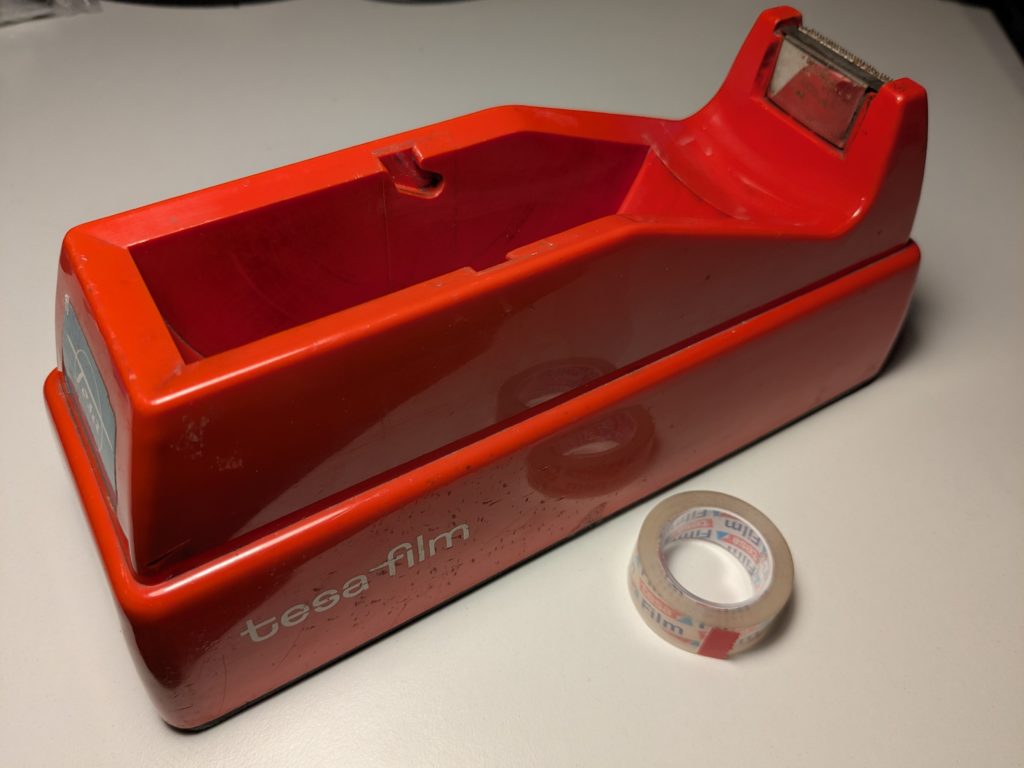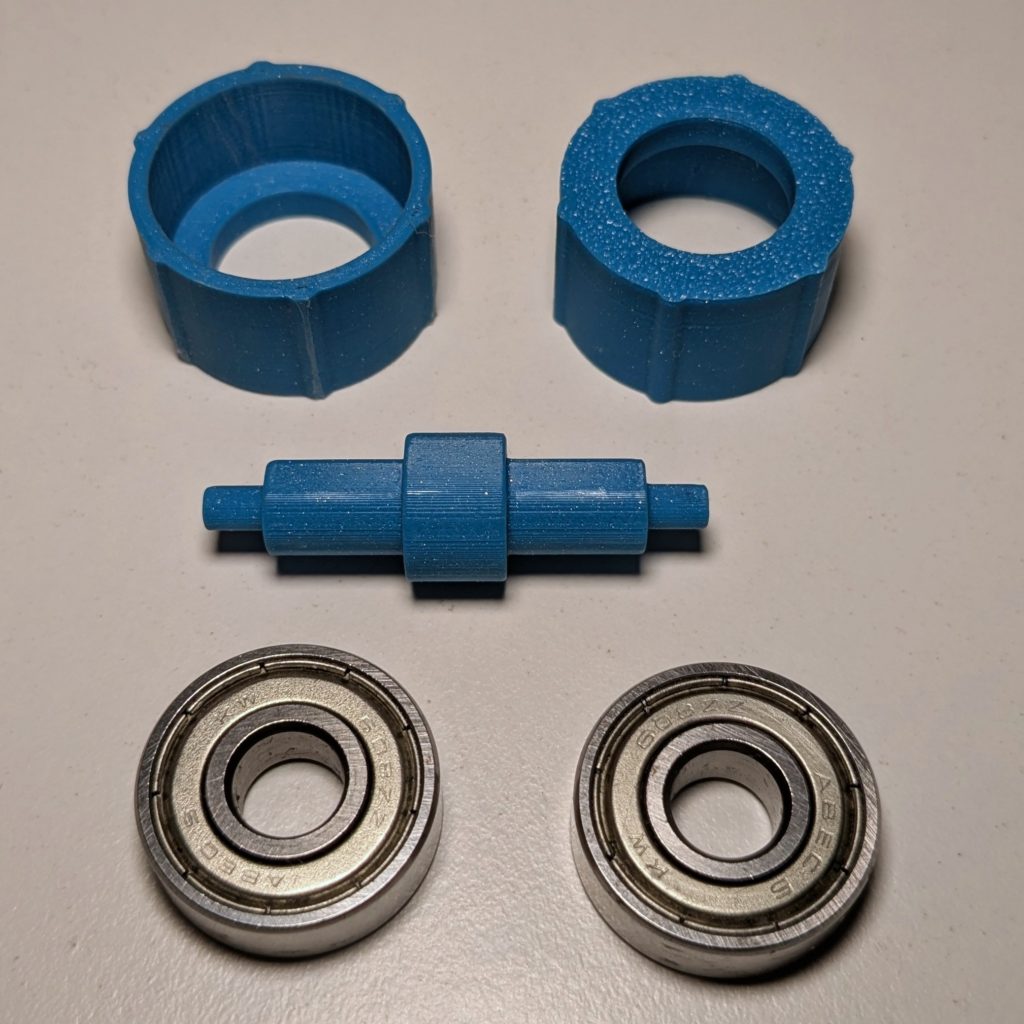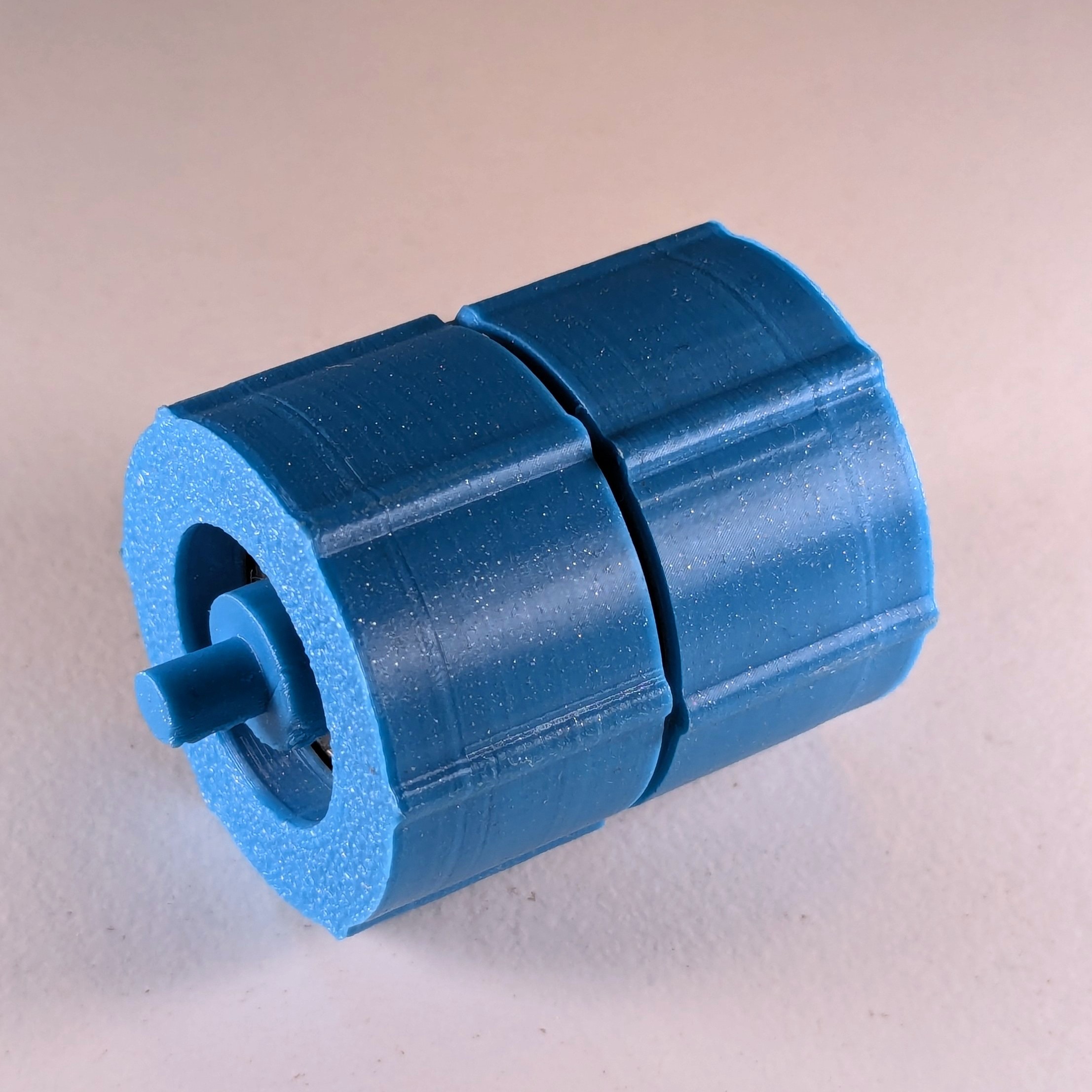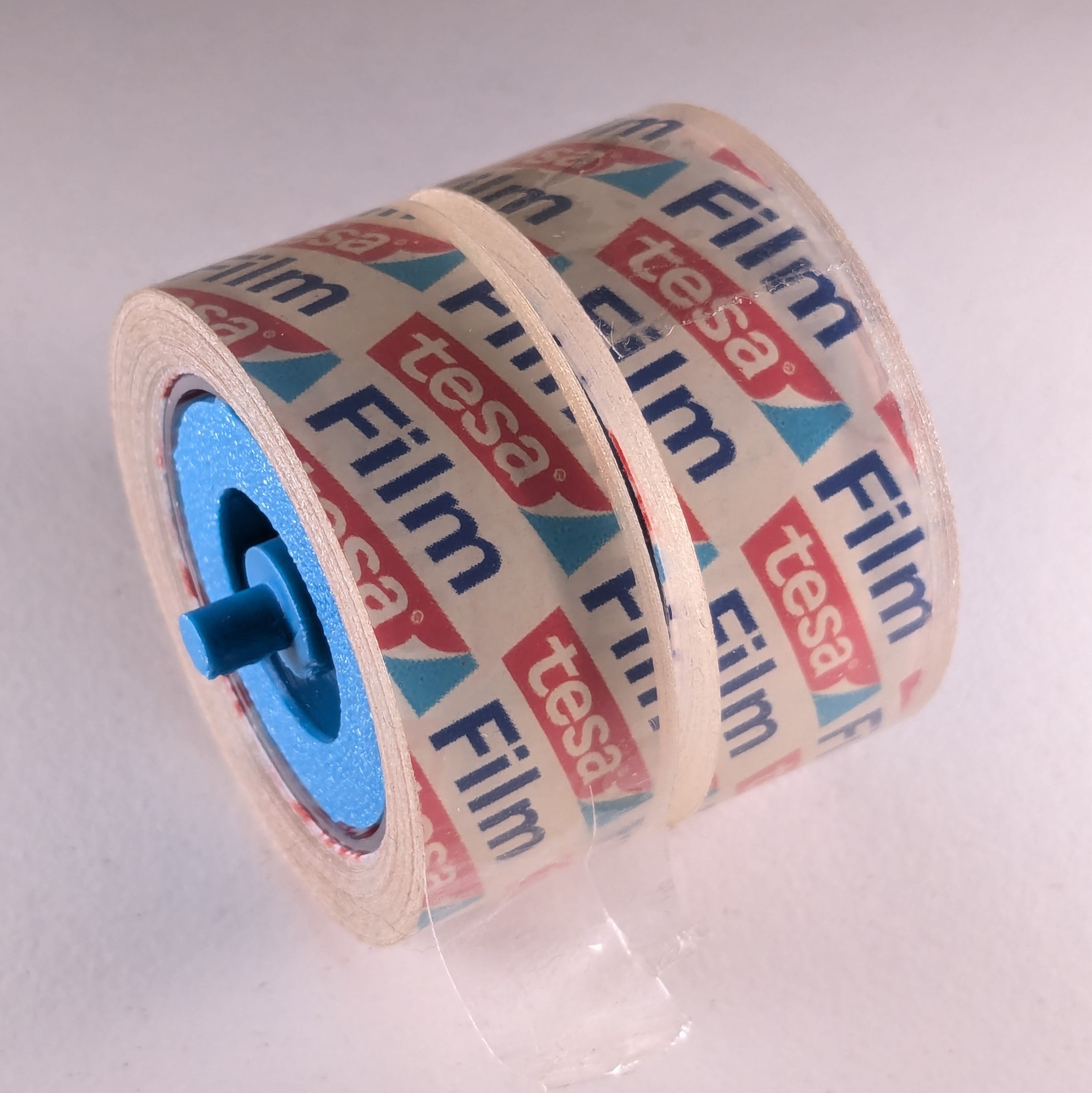Vor ein paar Wochen besuchten wir, wärend eines Kurztrips nach München, mehr oder weniger zufällig einen Flohmarkt. Unter den wirklich richtig günstigen Dingen war ein vintage tesafilm Abroller. So ein Teil, das locker 4kg wiegt und diese tesa-Industrierollen aufnimmt, die statt der mickrigen 10 Meter, stattliche 66 Meter Klebefilm bereithalten! Leider fehlte der Abroll-Konus, auf den die Tesafilmrollen aufgesteckt werden. Aber man wäre ja kein Teilzeitmessy, wenn man nicht „das Potential erkennen“ würde!! Nach der Reinigung des orangenen Plasikgehäuses machte ich mich an’s Ausmessen, um einen Ersatz zu drucken.
Da ich in der Vergangenheit bereits einen Konus für einen „zivileren“ Roller konstruiert hatte, nahm ich das Modell als Ausgangspunkt. Ein erstes Exemplar für die Standardrollen mit 15 mm Breite und 10 Meter Länge war schnell fertig. Dabei stellte sich heraus, dass der Tischabroller Klebefilmrollen bis zu einer Breite von 30mm aufnehmen kann. Da 30 mm ziemlich genau zweimal 15 mm sind, müsste man doch eigentlich einen „Doppelabroller“ konstruieren können. Gerade zu Weihnachten, mit dem anstehenden Geschenkeverpackungsvolumen, eine hervorragende Idee!!
Wichtig ist dabei, dass sich die beiden tesafilmrollen unabhängig voneinander drehen können, da man ja immer nur eine der beiden tesas abzieht.
Die Lösung lautet: Kugellager! Jede der beiden Halbrollen steckt auf je einem Kugellager, das wiederum auf der gemeinsamen Achse steckt, die beide Rollen im Abroller hält. Im Fundus habe ich mehrere Kugellager aus alten Inlineskates, die mit einem Aussendurchmesser von 22 mm nicht ganz den Kerndurchmesser der tesarollen erreichen und mit 7mm Breite zu schmal sind („man könnte ja pro Rolle zwei Kugellager….„).
Die Kugellager sitzen auf einer starren Achse, die in der Mitte einen Wulst hat, damit die Lager beim Aufstecken in der richtigen Position bleiben und nicht zu weit in die Mitte geschoben werden können. Damit die tesafilmrollen Halt finden, stecken die Kugellager in „Töpfen“, die ihrerseits zum einen auf Passung gedruckt sind, zum anderen durch einen Rand dafür sorgen, dass die Lager in der richtigen Position auf der Achse sitzen.
Die Diashow zeigt die Montage der Einzelteile:
Ein absolutes Highlight der ganzen Aktion ist das Filament, das ziemlich genau das tesa-Blau nachahmt. Es handelt sich dabei um „Toms3D Infinity Blue“ von Das Filament.
Man könnte sagen, dass die ganze Aktion völlig überflüssig ist, da man einfach eine starre Walze konstruieren könnte, die einen etwas kleinern Durchmesser als die Tesarollen hat. Auf der könnten sich beide Rollen ebenfalls unabhängig voneinander drehen – quasi über die starre Achse rutschen.
Oder man könnte anmerken, dass die ganze Aktion mit dem „Doppellader“ gequirlte Scheiße ist – „…wechsel‘ doch einfach die Rolle, wenn sie leer ist“ :-D
Aber keiner der beiden Standpunkte führt zu so einem wunderschön overengineerten tesafilm Abroller!
Letztlich ist diese Lösung noch nicht das mögliche Ende der Evolution:
- Mit einem Rotationszähler (Magnetkontakt) könnte man mitzählen, wie oft sich die Rolle gedreht hat und anhand der möglichen Umdrehungen bei einer 10m-Rolle vorhersehen, wann sich die Rolle dem Ende entgegenneigt. Per Nachricht auf die WhatsApp Familiengruppe kann dann die drohende Infrastrukturapokalypse eines tesafilm Blackouts angesagt werden!
- Wenn man in die beiden Rollen, statt der Umdrehungszähler, 3-Achsen Magnetometer verbaut, wie man ihn aus den Handys kennt, lassen sich nicht nur die Umdrehungen zählen, sondern anhand des Umdrehungswinkels pro „Abzug“ auch entscheiden, ob ursprünglich eine große oder kleine Rolle aufgesetzt wurde, und abhängig davon exakt reagieren.
- Durch kleinste Unterschiede im Abzugsverhalten, die sich auf die Rollenbewegung überträgt, könnten Nutzerprofile erzeugt werden. Diese können dazu genutzt werden, den individuellen Verbrauch einzelnen Familienmitgliedern zuzuschreiben und zu entscheiden, wer die neue Rolle einzulegen hat, weil er/sie am meisten tesafilm verbraucht, oder die Rolle leergemacht hat.
- … ich hab jetzt noch gar nicht mit K.I. oder der Blockchain angefangen … :-D
Letztlich ist die umgesetzte Lösung vielleicht doch nur halbherzig!? :)
P.S.: Während der Recherche zu den Abmessungen der Tesafilmrollen hatte ich mich gefragt, was die Geschichte des tesafilms ist: In Deutschland hat die tesa SE, die eine Tochter der baiersdorf AG ist, die Markenrechte („SE“ steht für „Societas Europaea“ – die Europäische AG). Elsa Tesmer, Teamleiterin bei baiersdorf, gewann mit tesa 1906 einen internen Namenswettberb. Ca. 1930 erfand 3M in den USA das „Scotch Tape“ (U.S. Patent US1760820A), das 1935 von baiersdorf „wiedererfunden“ und ab 1936 als „Tesa Klebefilm“ zusammen mit dem ikonischen, patentierten Tischabroller, vermarktet wurde. „Tesafilm“ ist ein Gattungsbegriff für transparentes Klebeband im Duden.
Das Scotch Tape verdankt seinem Namen übrigens dem angeblich sprichwörtlichen Geiz der Schotten. What a rabbit hole!



















